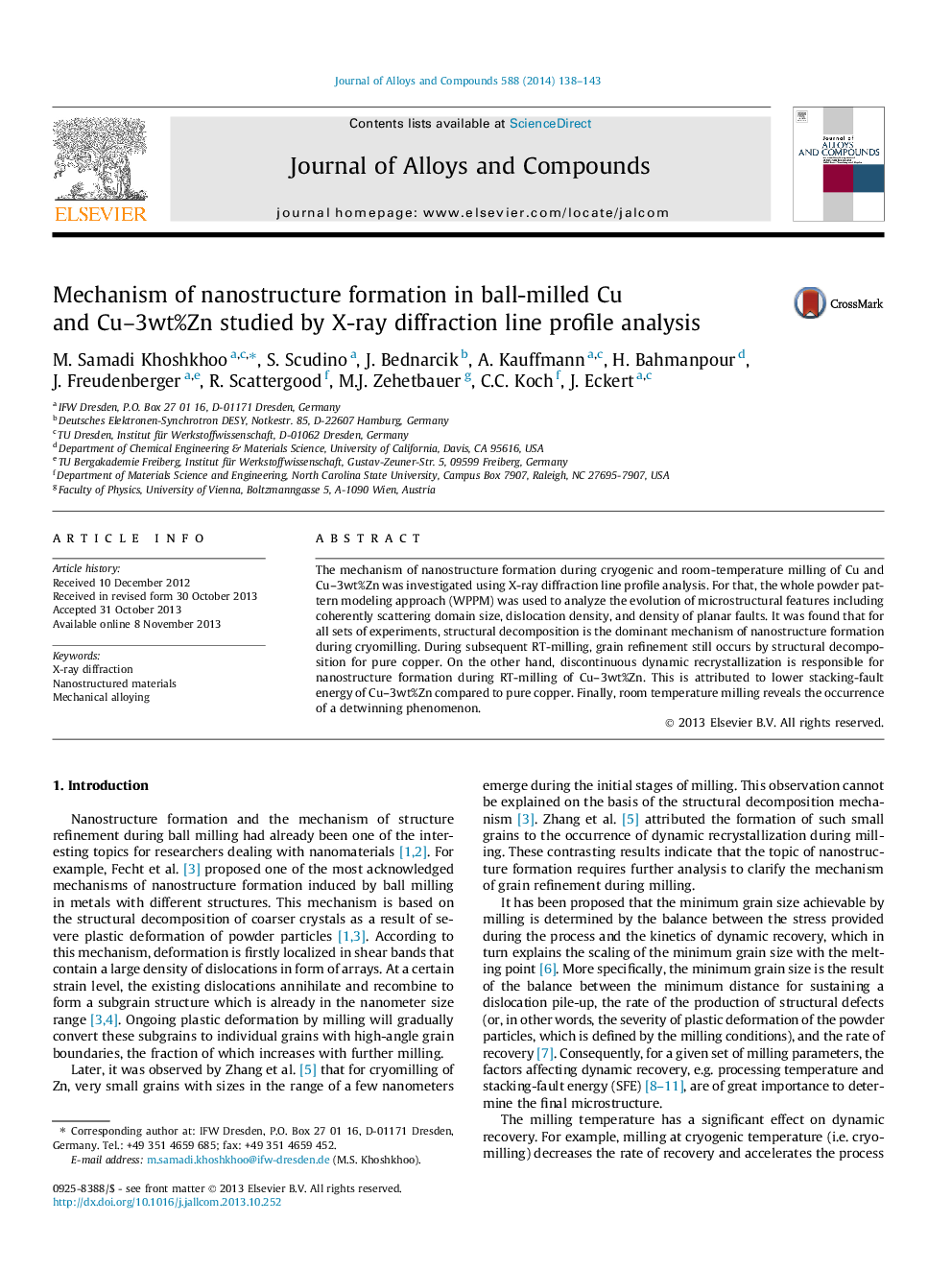| Article ID | Journal | Published Year | Pages | File Type |
|---|---|---|---|---|
| 1612160 | Journal of Alloys and Compounds | 2014 | 6 Pages |
•Nanostructured powders of Cu and Cu–3wt%Zn were produced using ball milling.•During cryomilling, nanostructure was formed by structural decomposition.•Dynamic recrystallization happened in room–temperature milling of Cu–3wt%Zn.•Structural decomposition took place during room–temperature milling of Cu.
The mechanism of nanostructure formation during cryogenic and room-temperature milling of Cu and Cu–3wt%Zn was investigated using X-ray diffraction line profile analysis. For that, the whole powder pattern modeling approach (WPPM) was used to analyze the evolution of microstructural features including coherently scattering domain size, dislocation density, and density of planar faults. It was found that for all sets of experiments, structural decomposition is the dominant mechanism of nanostructure formation during cryomilling. During subsequent RT-milling, grain refinement still occurs by structural decomposition for pure copper. On the other hand, discontinuous dynamic recrystallization is responsible for nanostructure formation during RT-milling of Cu–3wt%Zn. This is attributed to lower stacking-fault energy of Cu–3wt%Zn compared to pure copper. Finally, room temperature milling reveals the occurrence of a detwinning phenomenon.
